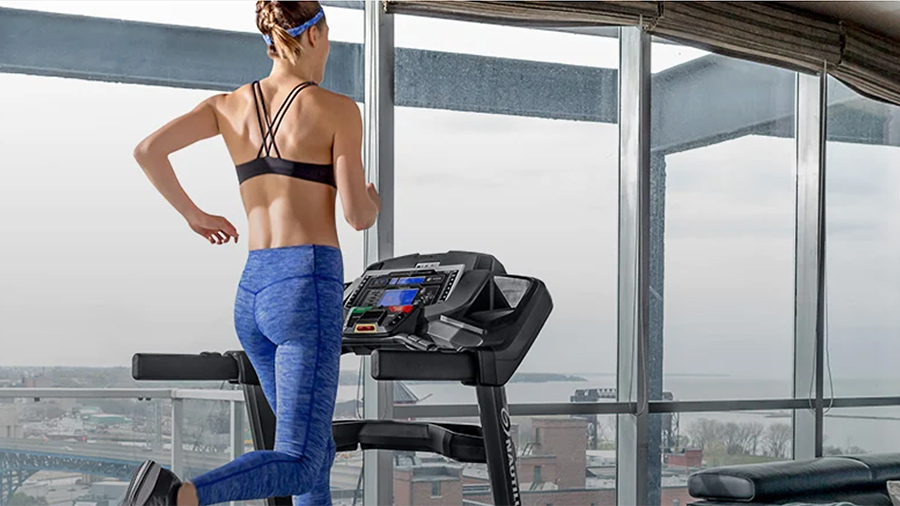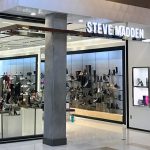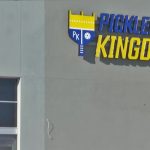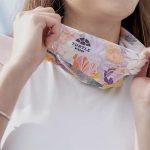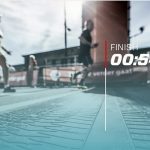Nautilus, Inc. reported sales were down 41.9 percent in the fourth quarter ended March 31. Sales grew 28 percent versus the fourth quarter of 2020 or 41 percent excluding the sold Octane business. The company lost money in the quarter but expects to achieve positive adjusted EBITDA for the second half of the current fiscal year.
“We continue to successfully execute on our multi-year plan of transforming Nautilus into a leading digitally-enabled at-home fitness company. Fiscal year and fourth-quarter performance was strong. Our strategic decision to pull forward key technology and marketing investments is paying off, as we have increased JRNY members to over 325,000 at year-end, exceeding our initial expectations by 30 percent. Our diversified omnichannel strength and cardio offerings enabled us to meet fourth-quarter demand, with revenue up 41 percent compared to the same period in 2020,” said CEO Jim Barr, Nautilus, Inc.
“Year one of our North Star strategy is complete and our transformation is well on track. The foundation has been set, including harnessing a culture of innovation, establishing key third-party partnerships, and evolving our manufacturing and distribution capabilities to meet consumer demand. These advancements will allow us to successfully navigate the current operating environment. We are committed to balancing continued growth investments with an efficient cost structure to drive both our transformation and put us on a path to deliver positive adjusted EBITDA during the second half of fiscal 2023.”
Fiscal 2022 Fourth Quarter Ended March 31, 2022, Compared To Three-Months Ended March 31, 2021
- Net sales were $119.7 million, compared to $206.1 million, a decline of 41.9 percent versus last year. As a reminder, the comparable quarter last year was the highest quarterly sales in the company’s history. Net sales are up 41 percent, or a 19 percent CAGR, when compared to the same period ended in 2020, excluding Octane. The lower demand for its cardio products was partially offset by strong sales of SelectTech weights and benches compared to the same period in 2021.
- Gross profit was $21.0 million, compared to $79.1 million last year. Gross profit margins were 17.5 percent compared to 38.4 percent last year. The 20.9 ppt decrease in gross margins was primarily due to increased product costs, logistics and discounting (-16 ppts) and increased investments in JRNY (-5 ppts).
- Operating expenses were $42.9 million, an increase of $3.5 million, or 8.9 percent, compared to last year, primarily due to a $5.1 million increase in JRNY investments and $2.5 million more in advertising. Total advertising expenses were $14.0 million versus $11.5 million last year.
- Operating loss was $21.9 million or a negative 18.3 percent operating margin, compared to operating income of $39.7 million last year, primarily due to lower gross profit and higher operating expenses.
- Loss from continuing operations was $18.2 million, or $(0.58) per diluted share, compared to income from continuing operations of $30.6 million, or $0.94 per diluted share, last year.
- Net loss was $18.2 million, or $(0.58) per diluted share, compared to a net income of $30.4 million, or $0.93 per diluted share, last year.
- The effective tax rate was 20.5 percent this year compared to 19.9 percent last year, primarily due to the impact of the higher non-deductible GAAP book expenses related to the VAY AG acquisition.
- The following statements exclude the impact of VAY AG acquisition and other related costs for the three months ended March 31, 2022.
- Adjusted operating expenses were $42.1 million, or 35.2 percent of sales, compared to $39.4 million, or 19.1 percent of sales, last year. The increase was driven by JRNY investments and advertising.
- Adjusted operating loss was $21.1 million compared to last year’s income of $39.7 million, driven by lower gross profit and higher adjusted operating expenses.
- Adjusted EBITDA loss from continuing operations was $16.9 million compared to earnings of $42.9 million last year.
- Adjusted operating expenses were $42.1 million, or 35.2 percent of sales, compared to $39.4 million, or 19.1 percent of sales, last year. The increase was driven by JRNY investments and advertising.
Twelve-Months Ended March 31, 2022, Compared to Twelve-Months Ended March 31, 2021
- Net sales were $589.5 million, down 11.3 percent compared to $664.9 million last year. Excluding sales related to the Octane brand, net sales were down 9 percent compared to last year and up 112 percent, or a 46 percent CAGR, when compared to the twelve months ended March 31, 2020. The sales decrease compared to the same period in 2021 was driven primarily by lower cardio sales offset by strong sales of its SelectTech weights and benches.
- Gross profit was $148.5 million compared to $272.3 million last year. Gross profit margins were 25.2 percent compared to 41.0 percent last year. The 15.8 ppts decrease in gross margins was primarily due to increased product costs, logistics and discounting (-14 ppts) and increased investments in JRNY (-2 ppts).
- Operating expenses were $173.8 million, an increase of $19.6 million, or 12.7 percent, compared to $154.2 million last year, primarily due to $25.9 million more in advertising, increased JRNY investments of $14.6 million, a legal settlement of $4.7 million and acquisition expenses of $2.4 million, partially offset by last year’s $20.7 million Octane loss. Total advertising expenses were $58.3 million compared to $32.4 million last year.
- Operating loss was $25.3 million compared to income of $118.1 million last year. The decrease was primarily due to lower gross profit and higher operating expenses, partially offset by the Octane loss.
- Net loss was $22.4 million compared to an income of $88.1 million last year.
- The following statements exclude the impact of the legal settlement, acquisition and other related costs for the twelve months ended March 31, 2022, and loss for the same period in 2021.
- Adjusted operating expenses were $166.7 million, or 28.3 percent of sales, compared to $133.6 million, or 20.1 percent of sales, last year. The increase was driven by $25.9 million more in advertising and JRNY investments.
- Adjusted operating loss was $18.2 million compared to last year’s operating income of $138.7 million, driven by lower gross margins and higher operating expenses.
- Adjusted EBITDA loss from continuing operations was $3.3 million compared to earnings of $151.7 million last year.
- Adjusted operating expenses were $166.7 million, or 28.3 percent of sales, compared to $133.6 million, or 20.1 percent of sales, last year. The increase was driven by $25.9 million more in advertising and JRNY investments.
JRNY Update
- Nautilus, Inc. continues to enhance the JRNY platform, creating differentiated connected-fitness experiences for its members, which numbered 325,000 at March 31, 2022. Of these members, 111,000 were subscribers.
- JRNY members have access to over 1,400 on-demand instructor-led videos in over 220 locations with its immersive Explore the World feature.
- JRNY platform benefits are more prominently featured on Bowflex.com and Schwinnfitness.com to help customers understand the full value of purchasing its connected-fitness cardio and strength products.
- The company has made great strides over the last two years to expand the installed base of “connectable to JRNY” products. In FY2020, it sold only one connectable to JRNYproduct, the Max Total. Since then, it has launched new bikes, treadmills and Max Trainers that are connectable to JRNY via an embedded screen or via the user’s own device. With the launch of the Bowflex SelectTech Workouts on the Platform in November 2021, the company can now include the SelectTech 552 and 1090 dumbbells to the connectable JRNY installed base, which grew to over 2.7 million units at the end of FY2022 from about 0.1 million units at the end of FY2020.
- In FY 2022, approximately 80 percent of total units sold were connectable to JRNY, compared to 22 percent in FY 2020.
Segment Updates
Fiscal 2022 Fourth Quarter Ended March 31, 2022, Compared to March 31, 2021
Direct Segment
- Direct segment sales were $59.8 million, compared to $101.5 million, a decline of 41.1 percent versus last year, and up 27 percent, or a 13 percent CAGR, compared to the same period in 2020. The net sales year-over-year decrease was primarily driven by lower cardio sales.
- Cardio sales declined 44.2 percent versus last year and were up 9 percent, or a 4 percent CAGR, compared to the same period in 2020. Lower sales were primarily driven by lower bike demand. Strength product sales declined 34.3 percent versus last year and increased 83 percent, or a 35 percent CAGR, compared to the same period in 2020. Lower sales this quarter were primarily driven by lower sales of Bowflex Home Gyms partially offset by increased sales of SelectTech weights and benches.
- The Direct segment ended the quarter with $0.8 million of backlog as of March 31, 2022, as product demand declined. These amounts represent unfulfilled consumer orders net of current promotional programs and sales discounts.
- Gross profit margin was 19.3 percent versus 50.3 percent last year. The 31.0 ppt decrease in gross margin was primarily driven by increased product costs, logistics and discounting (-24 ppts) and increased investments in JRNY (-7 ppts). Gross profit was $11.5 million, down 77.4 percent versus last year.
- Segment contribution loss was $11.7 million, or (19.5) percent of sales, compared to segment contribution income of $27.8 million, or 27.4 percent of sales last year. The decline was primarily driven by lower gross profit and increased investments in media and JRNY. Advertising expenses were $11.3 million compared to $10.1 million last year.
Retail Segment
- Retail segment sales were $58.7 million, down by 43.2 percent versus last year. Excluding sales related to Octane, net sales were up 60 percent, or a 27 percent CAGR, compared to the same period in 2020. Retail segment sales outside the United States and Canada were down 76 percent versus last year. Excluding sales related to Octane, net sales outside the United States and Canada were up 4 percent, or a 2 percent CAGR, compared to the same period in 2020. The year-over-year decrease in net sales is primarily driven by lower cardio sales partially offset by strong sales of SelectTech weights and benches.
- Cardio sales declined by 67.5 percent versus last year. Excluding sales of the Octane brand, cardio sales were down 15 percent, or a negative 8 percent CAGR, compared to the same period in 2020. Lower sales this quarter were primarily driven by lower bike sales. Strength product sales grew by 9.8 percent versus last year, and were up 277 percent, or a 94 percent CAGR, compared to the same period in 2020, led by the popular SelectTech weights and benches.
- As of March 31, 2022, the Retail segment’s backlog totaled $32.1 million compared to $178.6 million as of March 31, 2021, as retailers are now ordering closer to need compared to last year. These amounts represent customer orders for future shipments and are net of contractual rebates and consideration payable to applicable retail customers.
- Gross profit margins were 14.0 percent compared to 26.0 percent last year. The 12.0 ppt decrease in gross margin was primarily driven by increased product costs, logistics and discounting. Gross profit was $8.2 million, a decrease of 69.4 percent versus last year.
- Segment contribution income was $0.7 million, or 1.2 percent of sales, compared to $20.3 million, or 19.7 percent of sales, last year. The decline was primarily driven by lower gross profit.
Comparison of Segment Results for the Twelve-Month Period Ended March 31, 2022, To the Twelve-Month Period Ended March 31, 2021
Direct Segment
- Net sales, for the twelve-month period ended March 31, 2022, were $221.7 million, down 24.9 percent versus last year and up 85 percent, or a 36 percent CAGR, compared to the same period in 2020. The year-over-year decrease in net sales was driven primarily by cardio products, which declined by 39.6 percent versus last year due to lower sales of bikes. Strength product sales grew 13.0 percent versus last year, driven by SelectTech weights and benches.
- Gross profit margin, for the twelve-month period ended March 31, 2022, was 30.7 percent, down from 53.4 percent last year. The 22.7 ppt decrease in gross profit margin was primarily driven by increased product costs, logistics and discounting (-19 ppts) and increased investments in JRNY (-4 ppts). Gross profit was $68.1 million, a decrease of 56.8 percent versus last year.
Retail Segment
- Net sales, for the twelve-month period ended March 31, 2022, were $364.1 million, down 0.5 percent versus last year. Excluding sales related to Octane, net sales were up 5.0 percent versus last year, and up 136 percent, or a 54 percent CAGR compared to the same period in 2020. Retail segment sales outside the United States and Canada were down 13 percent versus last year. Excluding sales related to Octane, net sales outside the United States and Canada were down 9 percent versus last year and up 179 percent, or a 67 percent CAGR, compared to the same period in 2020.
- Cardio sales were down 22.6 percent versus last year, driven primarily by lower bike sales. Strength sales were up 61.9 percent versus last year, driven primarily by SelectTech weights, and up 219 percent, or a 79 percent CAGR, compared to the same period in 2020.
- Gross profit margin, for the twelve-month period ended March 31, 2022, was 21.0 percent, down from 30.3 percent last year. The 9.3 ppt decrease in gross profit margin was primarily driven by increased product costs, logistics and discounting. Gross profit was $76.6 million, a decrease of 31.0 percent versus last year.
Balance Sheet and Other Key Highlights as of March 31, 2022
Cash and Liquidity:
- Total liquidity, defined as cash, investments, and available borrowing under the company’s line of credit, was $80.0 million, compared to $167.6 million as of March 31, 2021.
- Cash, cash equivalents, and restricted cash were $14.2 million, compared to cash, cash equivalents, restricted cash and available-for-sale securities of $113.2 million as of March 31, 2021. The decrease was primarily due to the strategic decision to increase on-hand inventory for the fitness season and the acquisition of VAY AG.
- Debt and other borrowings were $29.4 million compared to $13.3 million as of March 31, 2021.
- $65.8 million was available for borrowing under the Wells Fargo Asset Based Lending Revolving Facility (Facility) compared to $54.4 million as of March 31, 2021.
- Inventory was $111.2 million, down from $128.1 million as of December 31, 2021, but up compared to $68.1 million as of March 31, 2021. The increase in inventory versus March 31, 2021, is driven by the strategic decision to increase on-hand inventory levels given the disruption in global logistics. About 14 percent of inventory as of March 31, 2022, was in transit.
- Trade receivables were $61.5 million, compared to $88.7 million as of March 31, 2021. The decrease in trade receivables was due to the timing of customer payments.
- Trade payables were $53.2 million, compared to $98.9 million as of March 31, 2021. The decrease in trade payables was primarily due to the timing of payments for inventory.
- Capital expenditures totaled $12.5 million for the twelve-month period ended March 31, 2022.
Forward-Looking Guidance
For Fiscal 2023, Nautilus expects to return to a more typical pre-pandemic seasonality with the second half of the year contributing more of the full year’s revenue. As a result, the company expects the first fiscal quarter ending in June to represent the low point for the year, followed by the second fiscal quarter ending in September being the second-lowest. The third-quarter ending in December is expected to be the strongest with the fourth quarter expected to be slightly lower than the third quarter.
Additionally, to gauge growth and progress against more “normalized” results, the company will be measuring the Fiscal Year 2023 sales growth versus the same pre-pandemic period in Fiscal Year 2020.
Fiscal Q1 2023
The company expects Q1 FY2023 sales to be between $45 million and $55 million. At the mid-point, compared to the same period in the fiscal year 2020, this guidance represents a decline of 13 percent or 4 percent growth excluding Octane. Q1 revenue guidance reflects weaker retail demand as our partners work through their elevated inventory levels.
The company expects a Q1 FY2023 Adjusted EBITDA loss of between $(22) million and $(27) million.
Second Half and Full Year 2023
The company expects Full Year Revenue of between $380 million and $460 million. At the mid-point, compared to the same period in the fiscal year 2020, this guidance represents 32 percent growth or 10 percent CAGR or 52 percent growth or 16 percent CAGR excluding Octane.
Given the impact of elevated inventory levels at the company’s retail partners, the company expects the 2nd half of the year to represent between 65 percent and 70 percent of full-year sales, slightly higher than the pre-pandemic second half seasonality of approximately 60 percent.
Gross margins for the second half of the year are expected to be in the range of 27 percent to 30 percent. Improvements versus last year are driven by lower inbound freight and demurrage fees, and the reduction in logistics facilities’ footprint. The company is closing one of its distribution centers when the lease expires in the fall of 2022 and will not be renewing the leases of some storage locations.
Given higher anticipated sales levels in the 2nd half of the year, improved gross margins, and plans to flex sales and marketing expenses in line with sales, the company expects to deliver positive adjusted EBITDA for the 2nd half of Fiscal 2023.
As a result, the company expects a full-year Adjusted EBITDA loss of between $(25) million and $(35) million. The company expects JRNY members to exceed 500,000 at March 31, 2022.
Photo courtesy Nautilus

